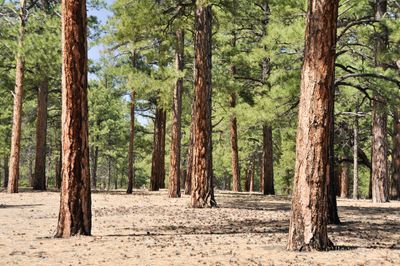About Different Pine Trees
While the group of pine trees are all found in the family Pinaceae, they are not all the same. They are grouped into nine genera. Those in the genus Pinus are referred to as pine, while others in the Pinacea family include larch, spruce, and hemlock. A key to identifying pine trees is the fact that the pine needles are attached together in bundles. The sheath holding them together is called a fascicle. The number of needles attached together in a fascicle differs among pine tree species.
Common Pine Tree Varieties
Different pine trees have different shapes, with heights ranging from quite short to soaring. Identifying pine trees requires inspection of the trees’ dimensions, as well as the number of needles per bundle and the size and shape of the pine cone. For example, one pine tree species, the black pine (Pinus nigra) is quite tall and wide, growing to 60 feet tall (18 m.) and 40 feet (12 m.) wide. It is also called the Austrian pine and only groups two needles per bundle. The long-lived bristlecone pine (Pinus aristata) tops out at only 30 feet (9 m.) tall and 15 feet (4.5 m.) in breadth. Its fascicle holds groups of five needles. The chir pine (Pinus roxburghii), native to Asia, shoots up to 180 feet (54 m.) tall and has three needles per bundle. In contrast, the mugo pine (Pinus mugo) is a dwarf, usually presenting as a creeping shrub. It is an interesting pine specimen in the landscape. Some types of pine trees are native to the United States. One is the eastern white pine (Pinus strobus). It grows fast and lives a long time. Cultivated for ornamental purposes as well as for lumber, it is unquestionably one of the most important pine tree species on the continent. Another native pine is the Monterey pine (Pinus radiata), native to the foggy Pacific coast. It grows very tall, with thick trunk and branches. It is used for landscapes as well as commercial purposes.
